9 Ways to Avoid Composting Mistakes
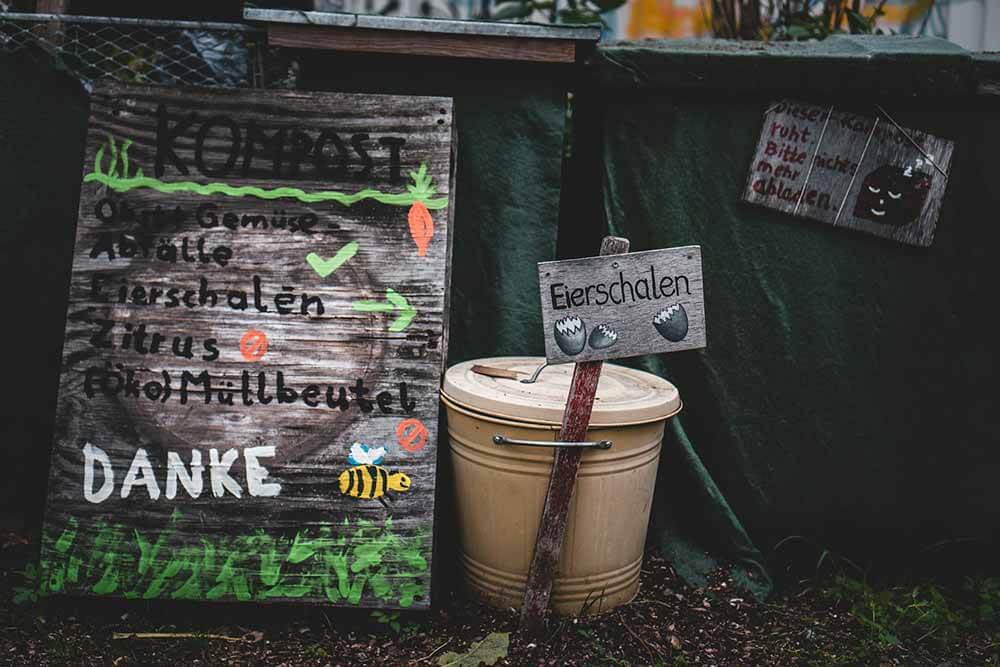
Composting is a process favored by gardening enthusiasts and environmentalists alike, for converting organic waste into high-quality fertilizer. If you can compost in your restaurant or your home, your action will be very helpful to reduce landfill waste, lower greenhouse gas emissions, and enrich the soil.
However, do you have enough experience with composting? Do you know how your composting method works? Today, we will tell you 9 ways to avoid composting mistakes to help you get higher-quality compost.
Balance Green and Brown Materials
Composting relies on green materials and brown materials. The green materials are mainly from kitchen scraps like fruit and vegetable peels, coffee grounds, and grass clippings. They are rich in nitrogen, which promotes the growth of microorganisms, which are responsible for breaking down organic waste. The brown materials are mainly from dry leaves, straw, shredded cardboard, and wood chips. They are rich in carbon and provide a source of energy for microorganisms to break down the compost.
One of the important factors for successful composting is the proper balance of green and brown materials. Too much nitrogen can cause smelly, sticky compost piles, and too much carbon can cause slow decomposition. Therefore, it is very important to balance the proportion of brown and green materials to facilitate the composting to enrich your plant.
To create an ideal compost mix, aim for a green-to-brown ratio of approximately 2:1 or 3:1 by volume. For each part of green material, you need to add 2 parts or 3 parts of brown material. This ratio is not mixed and may vary according to different composting methods and the available materials.
Here are some green materials and brown materials for your reference, you can identify other items not mentioned based on their characteristics.
Green Materials including:
- Fruit and vegetable scraps
- Coffee grounds and filters
- Tea bags (non-plastic)
- Fresh plant trimmings
- Seaweed (rinsed of excess salt)
Brown Materials including:
- Dry leaves
- Straw or hay
- Shredded cardboard or newspaper (avoid glossy or colored paper)
- Sawdust (from untreated wood)
- Cornstalks
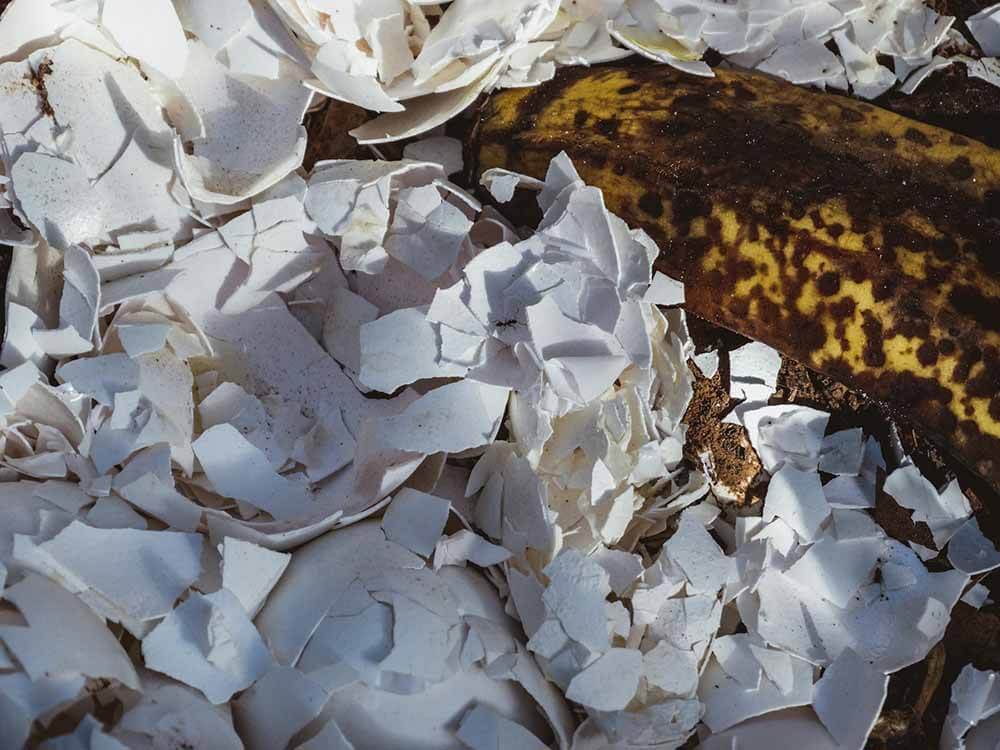
Chop or Shred Materials
Chopping or shredding compostable materials also can facilitate quicker decomposition. Also, small pieces can ensure better aeration and reduce the risk of anaerobic conditions that can lead to foul odors.
Tips to Effectively Chop or Shred the Compostable Materials
Kitchen Scraps: Use a fruit knife or kitchen shears to cut fruit peels and vegetables into small pieces. It would be better if your kitchen is equipped with a mixer, you can quickly grind this kitchen waste.
Garden Trimmings: For garden waste like plant stalks and stems, you can use a pruner to cut them into small pieces.
Cardboard and Paper: Use a paper shredder to shred the paper into small pieces. For some hard cardboard, you can tear them into small pieces by hand.
Twigs and Branches: For larger woody materials, you can use a hand saw or secateurs to cut them into small pieces.
Provide Proper Aeration
Adequate nutrients are essential for successful composting. When compost piles lack proper aeration, this becomes an environment where anaerobic bacteria dominate. This can lead to foul-smelling compost, slow decomposition, and even the production of harmful by-products.
Turning your compost pile regularly is necessary to maintain proper ventilation in your compost pile. Proper aeration and adequate oxygen promote microbial growth and activity when you turn your compost pile.
Things to Note When Turning the Compost Pile
There are some points that require special attention when it comes to turning the compost pile and creating aeration and oxygen conditions.
Frequency
When it comes to how often to turn your compost pile, you need to make a decision based on actual conditions. Such as your composting method, weather, size of compost pile, etc. Generally speaking, turn it at least once every 1-2 weeks. If it’s hot weather, we recommend turning your compost pile more frequently.
Mixing
Use a pitchfork, shovel, etc. to mix and turn the compost pile thoroughly. The goal is to mix the compost material evenly.
Moisture Check
When you turn your compost pile, you should check its moisture content. It should look as moist as a wrung-out sponge. If the compost is too dry, you should add water as you turn it. If the compost is too wet, you should add some dry brown materials to equalize the moisture.
Monitoring Temperature
Use a compost thermometer to measure the temperature of your compost pile when you turn it. The best temperature for compost piles ranges from 130-160°F (55-70°C) since this temperature range promotes optimal decomposition and helps kill weed seeds and pathogens.
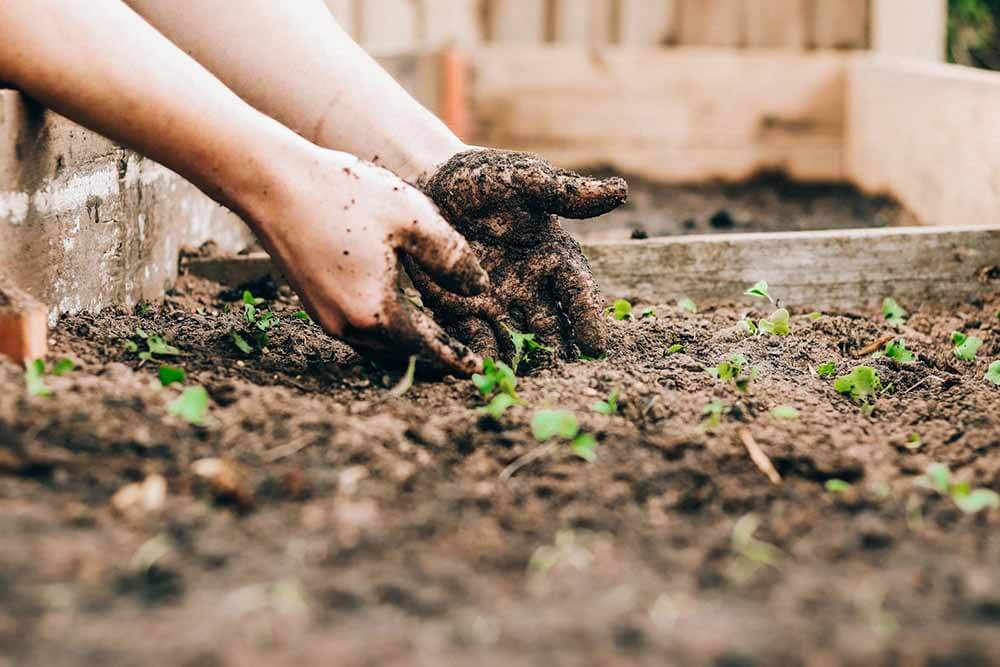
Maintain Moisture Levels
Adequate moisture is necessary to support microbial activity, microorganisms need water to effectively break down organic matter. Without enough moisture, the composting process slows down and microbial activity decreases, causing decomposition to stagnate. Too much moisture in turn creates anaerobic conditions, leading to poor odor and composting conditions.
Tips for Maintaining the Right Moisture Balance in the Compost Pile
As mentioned above, maintaining proper moisture is very important for successful composting, below are some tips for you.
Monitor Moisture
Regularly check the moisture level of your compost pile, especially in the rainy season or dry season, it is important to maintain a balanced humidity.
Add Water
If the compost is too dry, add water while turning the compost pile. You can use a hose or spray bottle to add the water evenly.
Use Cover
If it’s rainy season, you can use a tarp to cover your compost pile to prevent it from getting too wet.
Add Dry Materials
If the compost pile is too wet, you can add some brown materials, like shredded leaves, straw, or sawdust. They can help to absorb the excess moisture and improve the quality of the compost pile.
Turn the Pile
Turning the compost regularly has two purposes. One is to improve the aeration of the pile, two is to mix the moisture of the compost evenly.
Compost Bin Design
If you are using a compost bin, make sure there are drainage holes in the bottom of the bin so excess water can drain out of the bottom.
Use Compost Tumblers
Compost tumblers are designed to prevent excess moisture. The design of this tumbler allows you to turn the soil easily, provide easy ventilation, and help regulate the moisture balance of the compost pile.
Avoid Mixing Non-Compostable Food Waste with Compostable Waste
First, let’s take a look at what are the non-compostable items in food waste. Then, when you’re sorting garbage, you can’t go wrong.
What items cannot be composted?
Meat and Fish: Avoid composting meat, fish, and their bones. These items easily attract pests, because of their smell.
Dairy Products: Dairy items such as milk, cheese, yogurt, and butter are also not suitable for composting, since they produce unpleasant odors and attract unwanted critters.
Oily and Greasy Foods: Food waste with high oil content cannot be composted. Greasy waste covers the compost pile, preventing air circulation and creating anaerobic conditions.
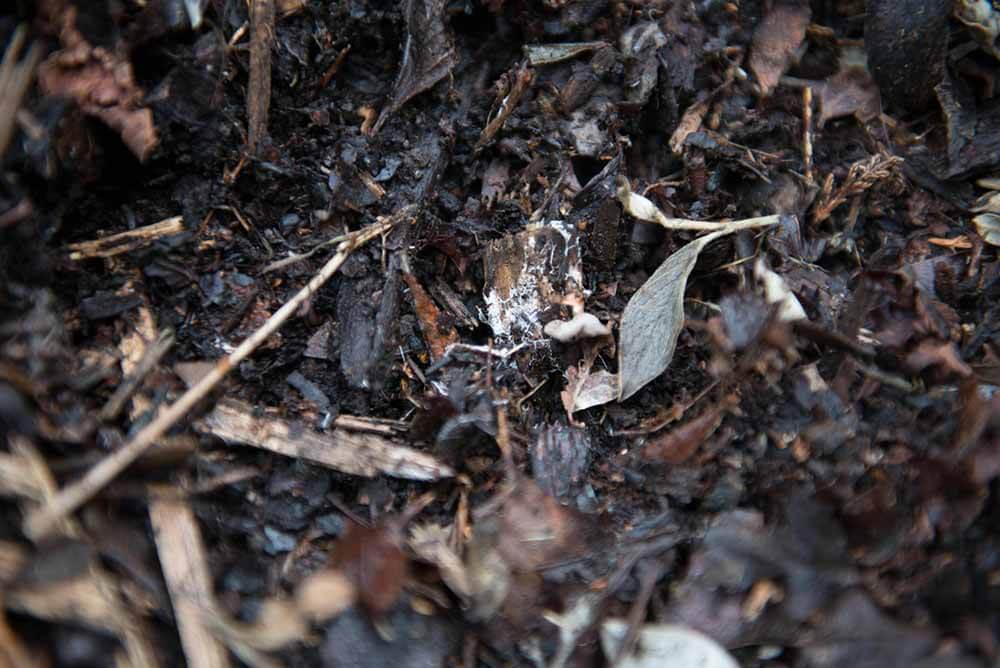
Exclude Certain Materials
In addition to some non-compostable kitchen waste, there are also some items that you should pay special attention to that cannot be composted.
Pet Waste
Cat and dog feces in daily life cannot be composted. Their feces may contain parasites, bacteria, and pathogens that can survive the composting process and contaminate the compost pile.
Diseased Plants
Avoid composting plants affected by diseases or pests. When compost is used in the garden, infected plants can spread pathogens to other healthy plants.
Treated Wood
Wood treated with preservatives, paints, or stains cannot be composted. These materials contain harmful substances that can invade the soil.
How to properly dispose of non-compostable items?
Pet Waste: Dispose of pet waste in a regular trash can. Unless your area has a composting system that uses high temperatures to kill pathogens, you can put pet waste in it.
Diseased Plants: Contain diseased plants and remove them for disposal. In some areas, municipalities provide specialized services to deal with diseased plants.
Treated Wood: Treated wood should be taken to a designated recycling facility for disposal.
Use a Compost Thermometer
You can use a compost thermometer to regularly check the temperature of your compost, which will help you better understand the health of your compost so you can make timely corrections.
Effect of Temperature on Composting
Let’s take a look at some of the ways temperature affects composting.
Promoting Decomposition
Checking the compost temperature from time to time will help you know whether the temperature of the compost pile is within the optimal temperature range. The decomposition process is usually most active between 130-160°F (55-70°C).
Killing Weed Seeds and Pathogens
Compost temperatures above 131°F (55°C) can effectively kill many weed seeds and pathogens present in the compost pile.
Evaluating Composting Progress
By checking the compost temperature regularly, you can also measure the progress of the composting process. Continued high temperatures indicate active decomposition and a drop in temperature indicates that the compost pile may need to be adjusted.
How to Use a Compost Thermometer Effectively?
When you use a compost thermometer to take temperature measurements on your compost pile, there are a few things you need to pay attention to.
Insertion Depth
When you use a compost thermometer, make sure you put the probe into the center of the pile, not the edge, because the outer layer of compost does not accurately represent the overall compost temperature.
Frequency of Measurements
It is best to check the compost temperature once a day or every other day. You can deduce whether your composting process is healthy based on temperature fluctuations.
Monitoring Trends
Pay attention to changes in temperature over time. A significant increase or decrease in temperature is a sign that it’s time to make adjustments to your compost pile.
Compost Pile Management
If the compost pile is too low, you can add more green material. If the compost pile is too high, you can add more brown material.
Safety Precautions
Be careful when handling the compost thermometer as it may be a probe and store it away from children and animals.
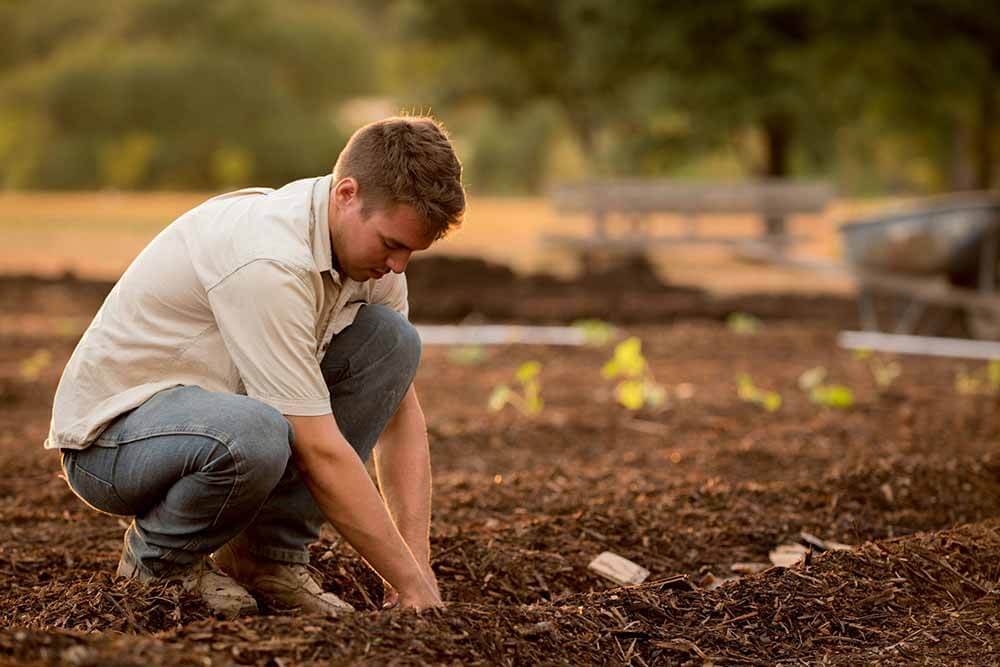
Be Patient
The time required for composting will vary depending on a number of factors:
Composting Method
Different composting methods will see very different results. Traditional compost piles and bins can take anywhere from a few months to a year to compost. But now there are more advanced methods, such as hot composting and the use of compost tumblers, which can complete composting in a matter of weeks.
Compost Composition
The mix of green and brown materials, the size of the compost pile, and the balance of nitrogen and carbon-rich materials all influence decomposition speed.
Climate and Weather
Composting under warmer weather is better than cold weather. Cold temperatures slow down microbial activity, but hot temperatures can accelerate decomposition.
Aeration and Moisture
Adequate airflow and proper moisture promote microbial activity and speed up the composting process.
Compost Turning
Turning your compost pile regularly to aerate it and mixing the compost materials will speed up decomposition.
Choose the Right Composting Method
Which composting method is more suitable for you depends on each person’s actual situation. Let’s take a look at the methods of composting.
Compost Piles
Compost piles are one of the most common and straightforward methods of composting. Place organic materials in an area of your yard or garden where they will decompose over time.
Pros of Compost Piles
- Low cost and easy to set up
- Suitable for large-scale composting.
- A great way for yard waste and garden trimmings composting.
Cons of Compost Piles
- May attract pests if not managed properly.
- This method decomposes more slowly than state-of-the-art methods.
- Limited control over composting conditions.
Compost Bins
Compost bins come in various forms, such as fixed bins, tumblers, etc. Managing and storing compost materials in this form allows for better control of composting conditions.
Pros of Compost Bins
- A neat, clean look and better control of your compost material.
- Faster decomposition due to better heat retention.
- Easy to manage and control compost conditions.
Cons of Compost Bins
- Purchase bins are more expensive than the traditional method.
- Not suitable for large amounts of waste to compost.
- Need turning and maintenance.
Vermicomposting
Vermicomposting uses worms (typically red wigglers) to break down organic matter. The worms consume the organic waste, producing nutrient-rich castings (worm compost) as a byproduct.
Pros of Vermicomposting
- Suitable for indoor and small-space composting.
- Faster decomposition due to worms’ efficient breakdown.
- Produces high-quality compost (worm castings) and compost tea.
Cons of Vermicomposting
- Extra attention needs to be paid to worm feeding.
- Not suitable for large-scale composting.
- Worms are sensitive to temperature.
Bokashi Composting
This method is better for those who have limited space or prefer to compost indoors. This method uses a specialized bokashi bran to ferment kitchen scraps.
Pros of Bokashi Composting
- Suitable for indoor composting with minimal odor.
- Can compost meat and dairy.
- Faster fermentation than traditional composting.
Cons of Bokashi Composting
- Requires airtight containers and bokashi bran.
- Not suitable for composting large amounts of waste.
- Composting is incomplete and requires further composting before use in the garden.

John Q
John Q is Eco March’s Product Manager. With 5 years of prior experience in the food industry after graduating from university, he has been an integral part of Eco March. He excels in creating and developing eco-friendly food packaging products with a keen focus on enhancing the consumer experience.


